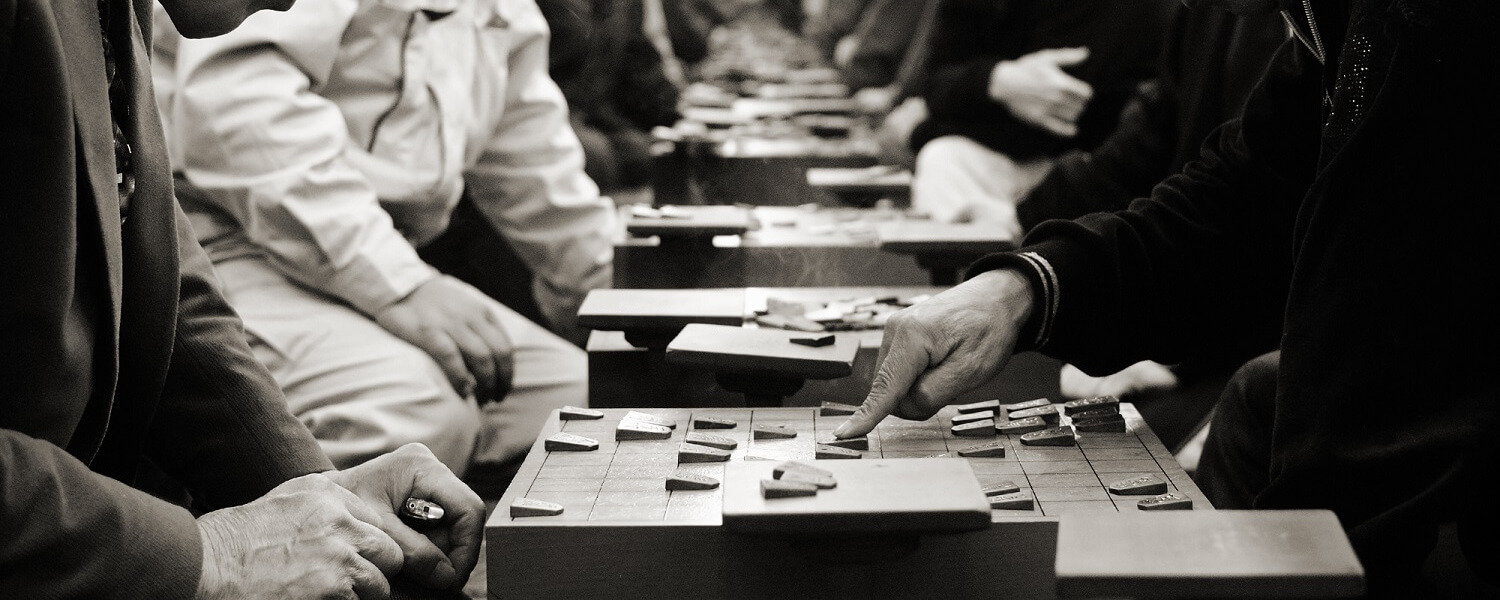Hey hey, Zeke here! Today I will be starting a new series of articles on Japanese board and card games. I recently wrote an article on a certain Shogi playing idol and the experience got me interested in what sorts of games are traditionally played in Japan. Being a bit of a board and card game aficionado myself, I decided to do some investigating. I hope that through this series, you can gain an understanding of some games people play in Japan as well as an appreciation for the art of old-fashioned games. And who knows, maybe you’ll find a new favorite along the way! Without further ado, let’s get this revue started with a classic that has been played for centuries. The game that got this whole ball rolling: Shogi!
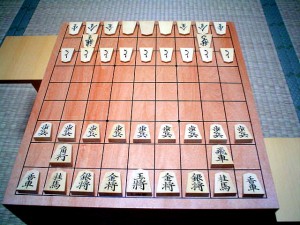
History & Game Type
Shogi’s name is spelled with the kanji 将 (shou-general) and 棋 (gi-board game.) Shogi has been played in its present form since as early as the 1500’s CE. Many similarities exist between what is known as “international chess” and Shogi. This is because both of these games (and several other games in the same class) can trace their origins back to a strategy game called chaturanga played in India in the 6th century CE.
These games all belong to a class known as abstract strategy games. Abstract strategy games are those which minimize luck (in fact, they contain no random determination whatsoever), contain no hidden information (all players can see all pieces and available plays at all times), and consists of players taking sequential turns. Many classic games fall into this category: chess, checkers, mancala, Shogi, and others. Play of these games can be described as a series of logic puzzles presented to each player. Each puzzle has an optimal solution and each player must use their knowledge of the game to discover the solution.
Equipment
The equipment for Shogi is relatively simple; in fact, it is quite similar to chess. There are twenty pieces for each player and a board on which the pieces are set and played.
The board consists of nine rows and nine columns. The intersections are traditionally rectangles, making the board rectangular, unlike chess. On a full-sized board, there is a special section on each player’s right side to hold captured pieces for later redeployment. Each side also has two dots to denote what are known as “promotion zones.”
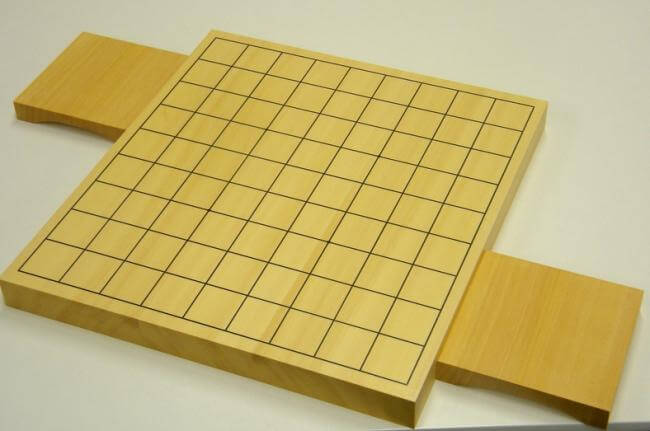
There are forty pieces in Shogi, twenty for each player. Pieces are not differentiated into sides, except for the kings. The allegiance of the piece is instead determined by which direction it points.
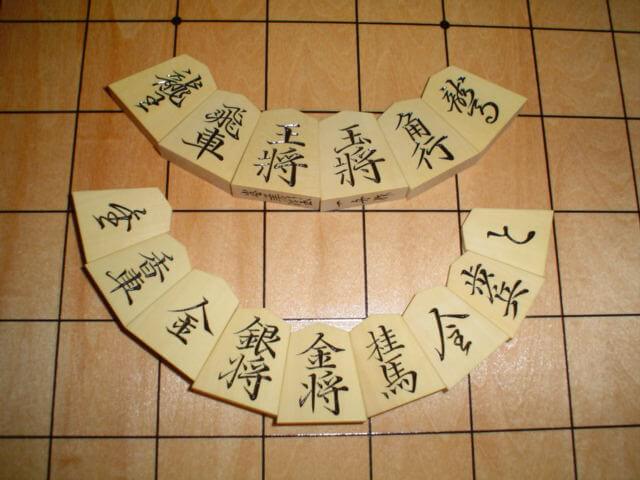
In the picture above, the pieces are, from left to right, top to bottom: promoted rook, rook, king of the champion, king of the Challenger, bishop, promoted bishop, promoted lance, lance, promoted silver general, silver general, gold general, knight, promoted knight, and finally, pawn and promoted pawn.
The pieces used to play Shogi (per side) are as follows: one king, one rook, one bishop, two gold generals, two silver general, two knights, two lances, and nine pawns. The pieces are also of slightly differing sizes, getting smaller as you go down the list. All pieces except the king and the gold general also have a reverse side which is revealed when a piece is promoted. The names used above are the English names. These names don’t necessarily represent a translation in all cases and are instead used to denote pieces which have similar movements in international chess.
Set up and Game play
The pieces are set up on the board as below, with there being three rows of placement:
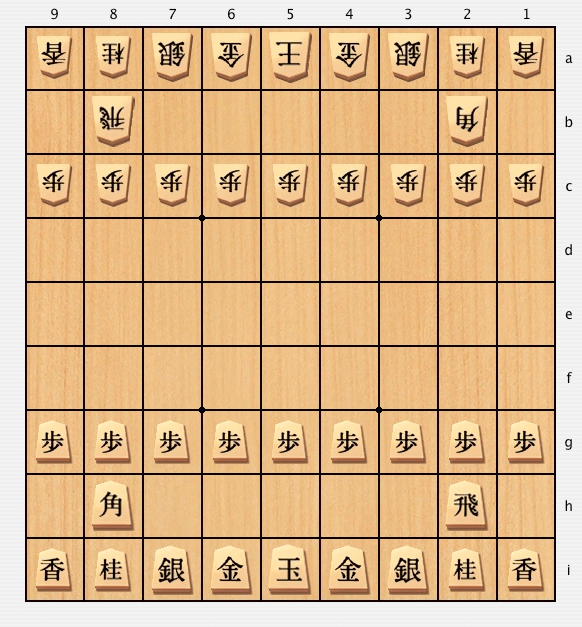
Traditionally, even the placement of pieces on the board is pre-determined. Kings are placed first, then gold generals, silver generals, and then knights. After that, the placement of further pieces is determined by the set-up style: in one, the pawns are placed next, followed by the remaining pieces, and in the other, the remaining pieces aside from the pawns are placed on the board, with the pawns being put down last.
One player takes black and one player takes white (as said before, there is no color difference in pieces, this simply is a way to mark sides). Black goes first and moves a piece according to its pattern. Then White may move a piece and pass the turn back to Black. Thus play proceeds, with each turn consisting of the active player either moving a piece, dropping a piece (this will be discussed later), or promoting a piece.
Like chess, each Shogi piece has its own movement pattern which it must strictly abide by. The king can move one square in any direction. The rook moves any number of squares along the horizontal and vertical. A bishop moves any number along the diagonal, and the pawns move only forward and only one square. These pieces mostly follow the rules of their chess counterparts.
The gold general moves like a king but cannot move backwards along diagonals. The silver generals follow a slightly different pattern: it can move one square forward or to any of the diagonals. A lance moves any number of squares straight forward.
The knight is a special piece in that it is allowed to “skip” over pieces, moving forward two spaces and then one to the right or left. This allows it to move over intervening allied or enemy pieces.
Pieces which reach the “promotion zone” (the other players started zone) may be flipped to the opposite side, after which their movement patterns change. A silver general, a knight, a lance, and a pawn all acquire the pattern of a gold general. The rook gains the ability to move one square to the diagonal in addition to normal rook movement. The bishop follows a similar pattern, gaining movement to the left-right, back-forth directions while maintaining unlimited diagonal movement.
Play proceeds by capturing an opponent’s pieces and limiting their movements in an attempt to force them into a winning board condition. Pieces are captured by movement in the opposing piece’s square, much like chess. Unlike chess, however, on later turns, a captured piece may be “dropped” onto the board, changing its allegiance to the player who captured it. This mechanic is why Shogi pieces have no markings to determine “sides.”
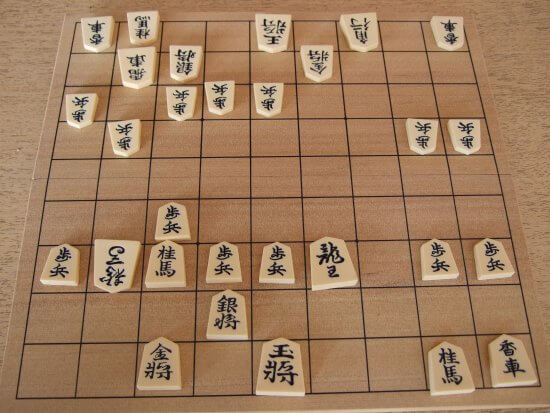
Like chess, the goal of Shogi is to force your opponent into a “checkmate,” a board condition where their king is threatened with capture and cannot escape. A threatened king is said to be “in check.” It is considered a courtesy for the losing player to resign as soon as the loss is unavoidable.
There are also two other ways a game may end: repetition and impasse. Repetition is a set of repeating moves that lasts four cycles. If the moves result in continuous checks, the checked player loses, otherwise a draw is declared. An impasse happens when both kings have proceeded to the promotion zones and neither player has the pieces or can gain the pieces, required to force a checkmate. The pieces on the board are then assigned points and tabulated. Any player under a point threshold loses. If both players are over or under, the game is declared a draw.
Wrap up
Shogi is one of the quintessential “Japanese” games. Many fans of Japanese culture are at least aware of its presence and perhaps even have a passing familiarity with the pieces and rules. It is a game that is easy to learn, but hard to master. With so many moves and so many strategies, it can take a lifetime to master the game. It challenges the mind with a nearly infinite amount of puzzles, all waiting to be created on the board.
But whether you are an expert level player, locked in a match for hours on end, or you just go online and play with a few friends, the main goal of any game is the same: to have fun.
I hope I have instilled some interest in this long-standing game. My hope is that some of you will go out and give it a try. The classics are classics for a reason. Who knows? Maybe we can play against each other some day.
Wanna try playing the game? We suggest purchasing this Shogi board game on Amazon.
That’s it for the first Zeke’s Board Game Revue! What did you think? Are there any games you’d like to see me cover? Let me know in the comments below! Classics to modern, cards to board games, I’ll cover it all. See you next time!
Sources: Wikipedia (Shogi, International Chess, and Abstract Strategy Games).
Big thank you to our supporters
From their continous support, we are able to pay our team for their time and hard work on the site.
We have a Thank-You page dedicated to those who help us continue the work that we’ve been doing.
See our thank you page